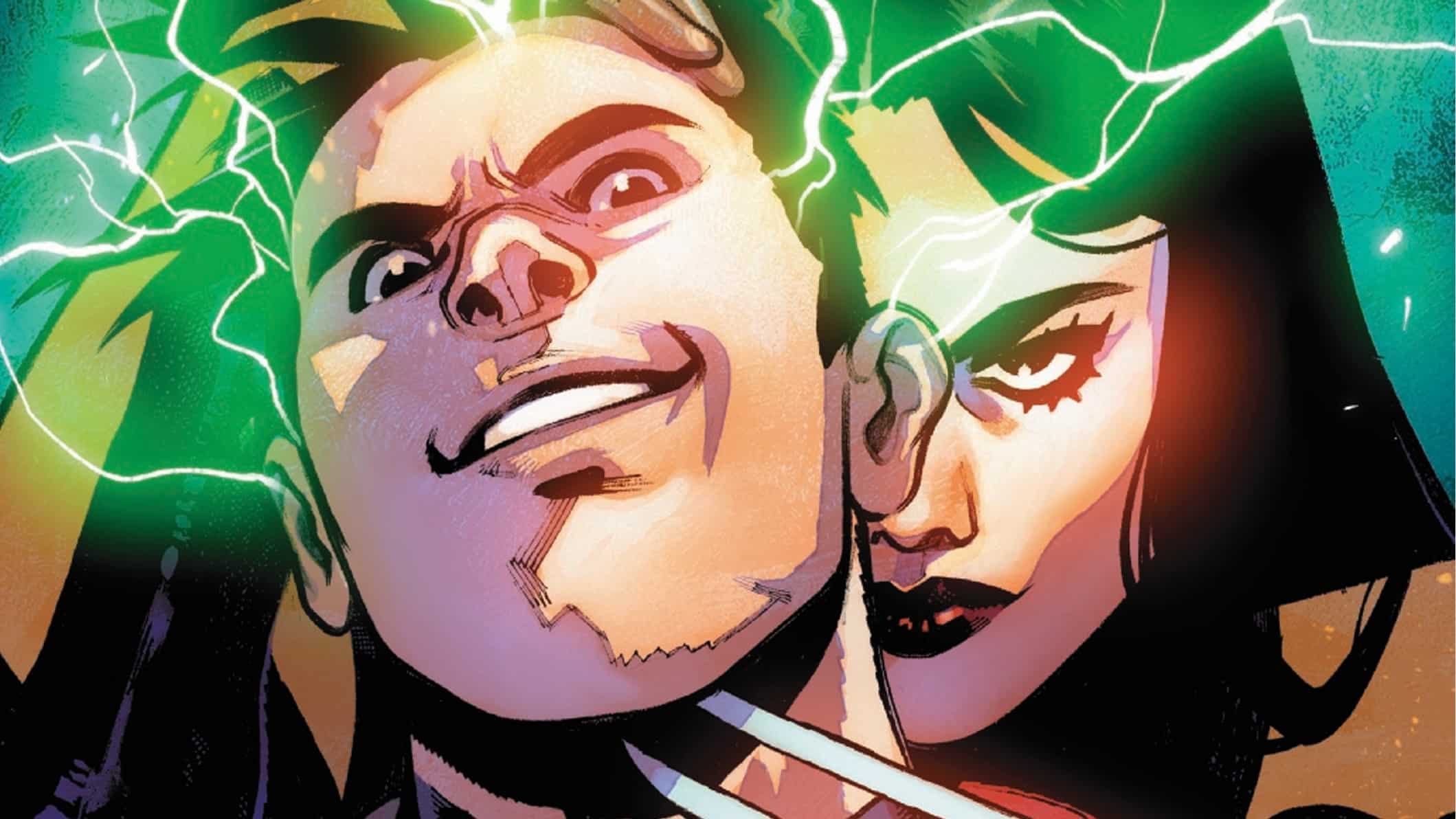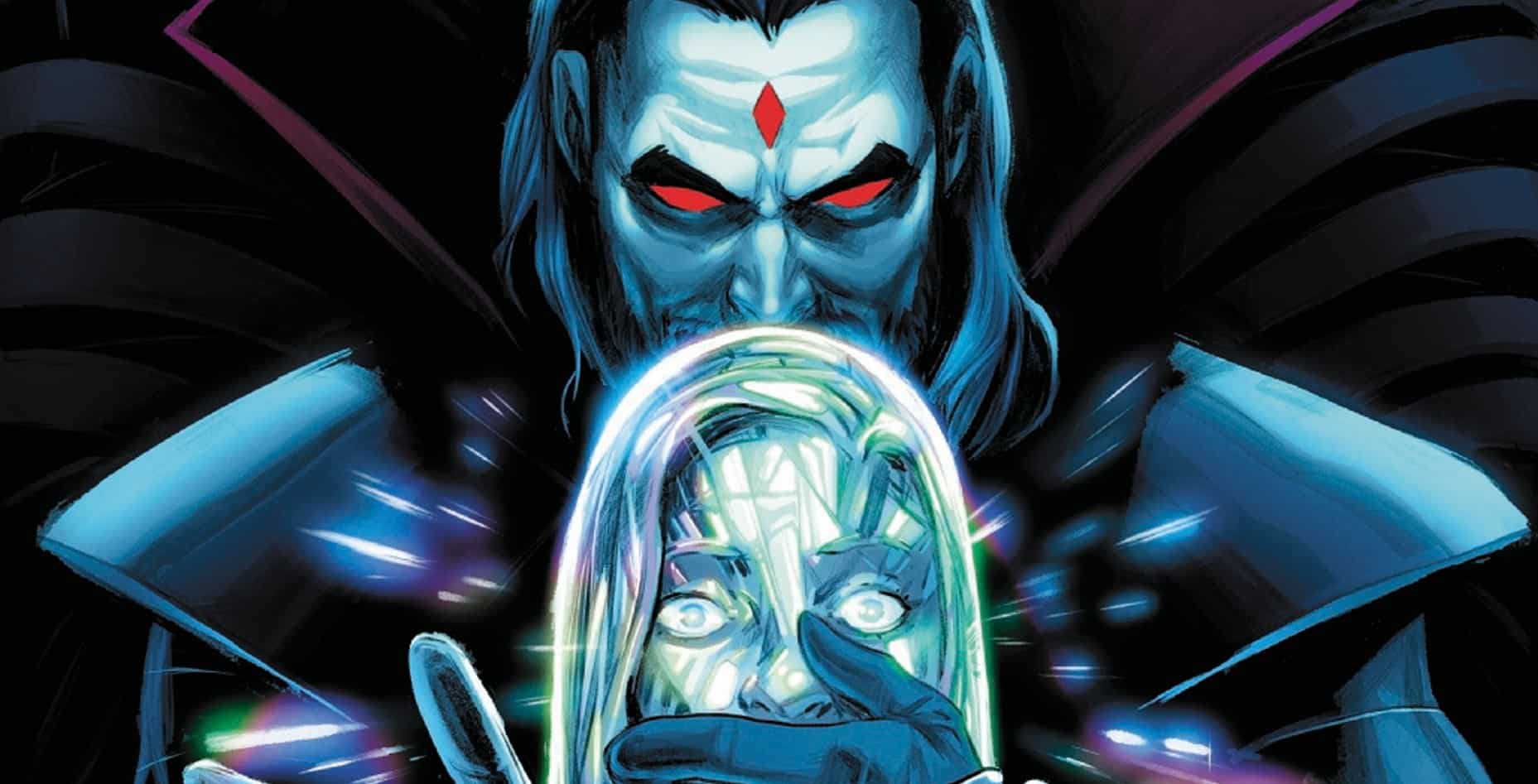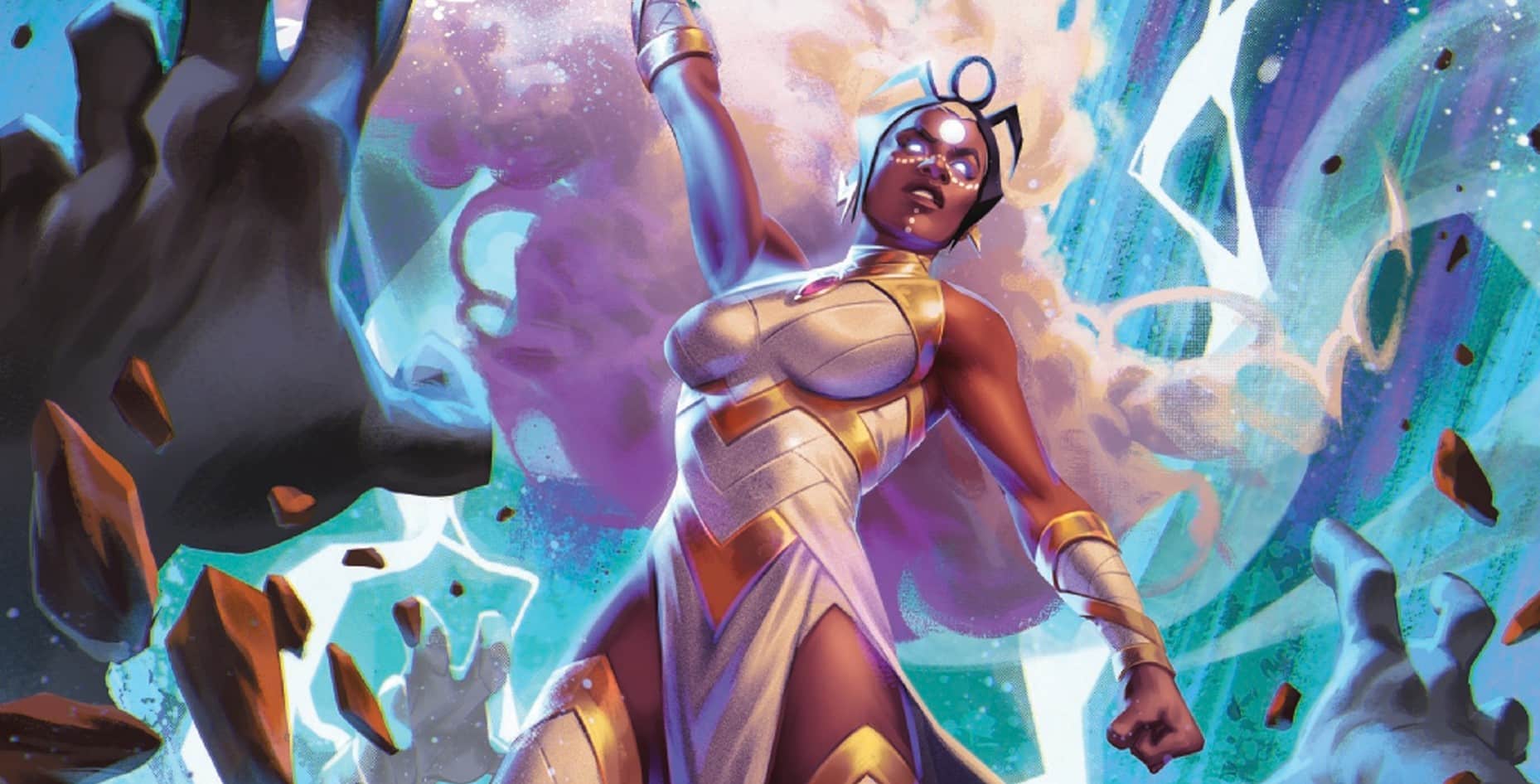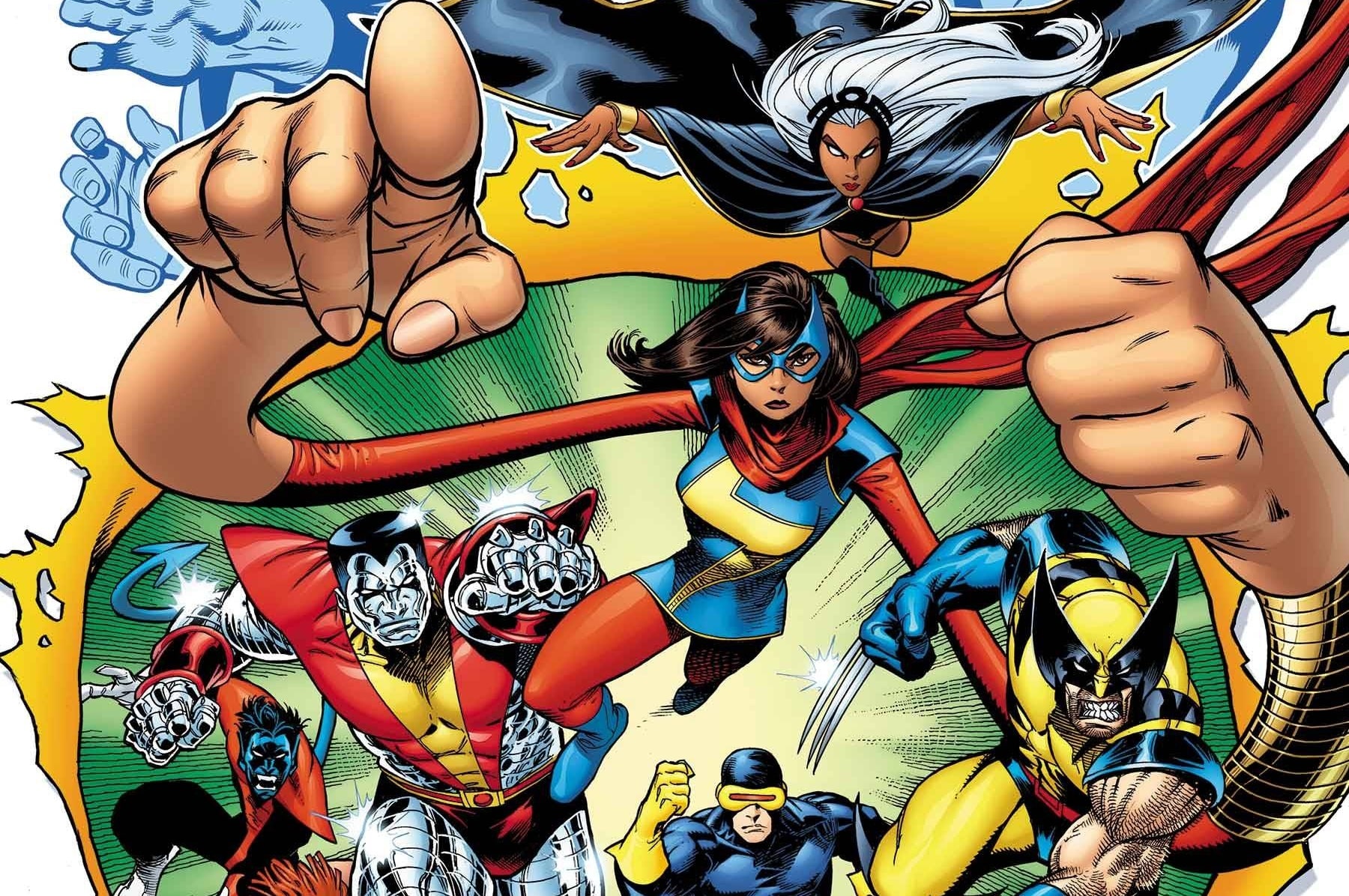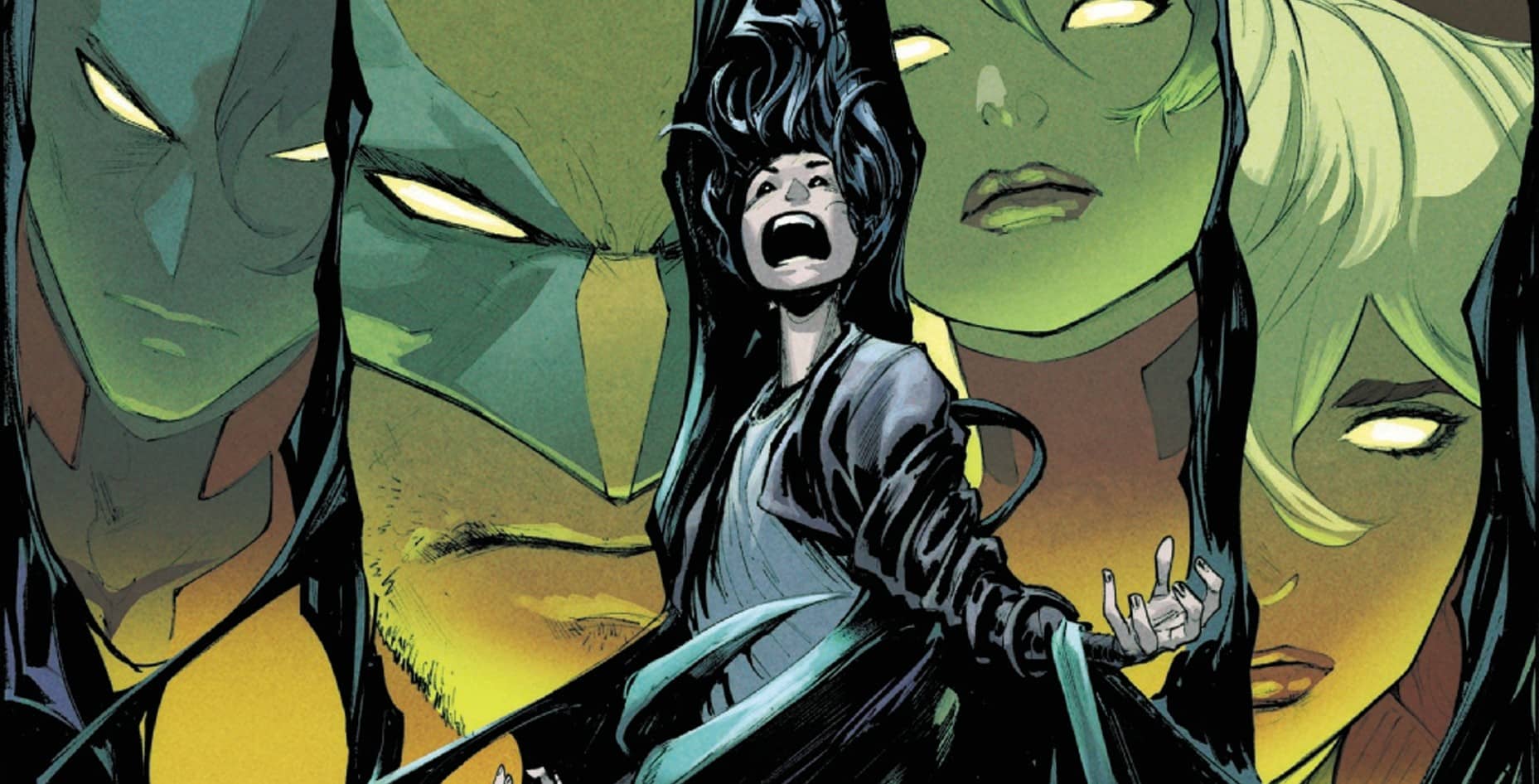Julian Keller, aka Hellion, swung back and forth between hero and baddie for almost his entire on-page existence. Now it looks like he’s killed civilians, and he’s headed to the mutant supermax for it. Should our NYX regulars capture him or set him free? Find out in NYX #8, written by Jackson Lanzing and Collin Kelly, drawn by Francesco Mortarino, colored by Raúl Angulo and lettered by Joe Sabino.
When superhero comics first became a thing, in 1939, anyone who read them could figure out why. Cheap, easy-to-find power fantasies depicted people in whom you could see yourself, imaginary avatars or best friends, but they also showed improbable doings, flight and space travel, and magic duels and techno-beasts, better than any other medium could hope to do, at the time. Now, that’s not true: We have video games, beautiful ones with open worlds and explosions and space aliens, and green screens and CGI to beat the band. What’s a superhero comic to do? Or rather — since superhero comics can just go on doing what they’ve always done — what’s a long-running, company-owned superhero comic universe better at doing than any other art form or genre or medium? What can these comics do that no Marvel movie or stand-alone fantasy novel or Zelda game or Halo clone can accomplish nearly as well?
Superhero stories at their best, and this run of NYX sometimes includes their best, show both the spectacular, sometimes allegorical, rule-of-cool-governed effects of powers and fights, and the long, twisty character developments, interactions, breakups and makeups that you can otherwise get only from daytime soaps (which barely exist anymore), Victorian novels and their realist descendants. Plus, those of us who read lots of comic books do not normally see ourselves represented in daytime soaps or Victorian novels, or even realist fiction aimed at adults, the kind that wins prestigious prizes. We’re young, we’re queer, we’re weird, we’re often disabled, and we don’t see ourselves when we look at what big publishers like to call the real world. But we don’t see ourselves, or not enough, on enormous glowing screens either. There’s just not enough time in a Marvel movie, or even in five of them, to show all the wrong turns and side trips and fragile attachments that come from what happens as we grow up.
That’s why we’re X-fans. (At least, that’s why I’m an X-fan.) That’s what the Bronze Age discovered, Claremont-era X-books most of all. And that’s what we get in the latest issue of NYX, narrated — like every issue so far — by a mutant who hasn’t narrated an issue before. This time it’s Julian Keller, aka Hellion, aka, briefly, The Krakoan, who in this title’s first arc did a bunch of violence in Times Square, supposedly as revenge terror against the baseline humans who took down his mutant paradise.
As we now know, Julian was working with Empath, who manipulates emotions. And as some of us know — the ones who’ve been reading X-books for a while, or who really like googling things — Julian and NYX stalwart Laura Kinney (aka Wolverine, aka the assassin once known as X-23) have quite the history. They rescued each other from certain death several times in New X-Men: Academy X. Julian kept Laura from killing human accomplices. A lot. Laura learned to trust Julian before she could trust any other mutant teen (back when they were both teens). They saved each other, sort of, from the Collector, in space. Then Julian asked her out, and she told him she just wasn’t that into him. She may have lied to herself.
You can go back and read those arcs if you like in New X-Men: Academy X #20-36, including the famous bus crash, and then in X-23 (2010) #17-19, written by Marjorie Liu. Or you can just pick up on the hints in this issue, where Laura, flanked by Sophie and Kiden, breaks into an armored van. “This is a rescue. Even though you don’t deserve it,” Laura says. It’s also a stare-down and an unwelcome surprise: Julian wasn’t under Empath’s telepathic control when he did the Times Square fight. He was acting on his own. That doesn’t mean he did what our heroes thought, and feared, he’d done.
That’s the plot. It’s barely an excuse for a plot, on its own. It asks us to know these characters already, to know what they’ve gone through: Laura gradually becoming a person and not just a weapon, Julian learning how his anger shapes him but need not control him, both of them figuring out how whatever kissy-face tension once brought them together belongs in the past, but the loyalty they developed for each other … maybe that holds right now.

Without that past, I don’t know what I’d think of this issue. With it, I love it. I also love the spectacle of color, and yelling, and mayhem, as Laura and Sophie confront Julian, and Kiden Nixon — Laura’s first powered friend anywhere (see the first NYX miniseries) tries to calm the onetime assassin down. It’s all the issue needs, too, for Julian’s careful, elaborate narration, taking us back to Krakoa, where he chose the Crucible (death and resurrection) to get back his amputated hands, and to get back his sense of his badass self. It’s all the issue needs to give us Julian’s death-before-dependence personality, his forever-sandpaper, but maybe not so evil soul. And it’s all this issue needs to do because, because, because it’s NYX #8, and it’s comic-book-featuring-Julian number who knows how many dozen, and comic-book-featuring-Laura number something something in the low hundreds. We know — or else the book, with its elegant quiet moments, invites us to get to know — these kids. We see how hard they’ve forked up — and how they help each other change.
Oh, and we see the tenderest moment yet between Laura and Kiden. They sit on a log, with rainbow colors and curves all around them worthy of Art Nouveau posters, and they talk about Laura’s captivity, back when Kiden first knew her: “You were like a … I don’t know … like a Nine Inch Nails song. All rage and guts and knives. The room wasn’t the cage. You were. And you were fighting it every single night. You were … You were so beautiful.”
I ship them now. I think the creative team wants us to ship them. Do you ship them? If not, why not?
More questions: How much has Laura grown from the girl who couldn’t stop killing and (as she says) didn’t know how to use contractions? How cool are Lanzing and Kelly for figuring out how to show Laura’s, and Kiden’s, refashioned bond in an issue that’s focused on, narrated by, mostly about, someone else? How different does Julian Keller, sometime hero, sometime villain, always impulsive, always tempted to hit first, now seem from that more famous mutant antihero from the early 2000, Quentin “I started out as a school shooter” Quire? And how much do Raúl Angulo’s colors do for the story’s flashbacks, its purposely ill-lit, back-of-a-van interiors, its sunlit arena, its changes of mood and scene, its climactic nine-panel grid, where we switch from all-emerald to all the colors of the rainbow as soon as Laura’s words get heard?
A lot. They do a lot. So does NYX #8.
X-traneous Thoughts
- Somebody’s gonna learn about the Crucible on Krakoa for the first time by watching Julian yell at Designated Crucible Guy Silver Samurai, who seems (it’s a flashback) to know that he comes to us from another age, the Nobody Called Marvel Out on Outrageous 1970s Orientalism age. I hope he’s at least fun to draw.
- Check out the way Laura uses her toe-claw to cut through Julian’s ankle-cuff. Look at the close-up. Somebody knows her powers well.
- Next issue dives into an editorially mandated crossover event, “X-Manhunt” — another hunt for Charles Xavier. Do you think he’s faked his own death again? What are the odds?
Buy NYX #8 here. (Disclaimer: As an Amazon Associate, ComicsXF may earn from qualifying purchases.)
Stephanie Burt is Professor of English at Harvard. Her podcast about superhero role playing games is Team-Up Moves, with Fiona Hopkins; her latest book of poems is We Are Mermaids. Her nose still hurts from that thing with the gate.

